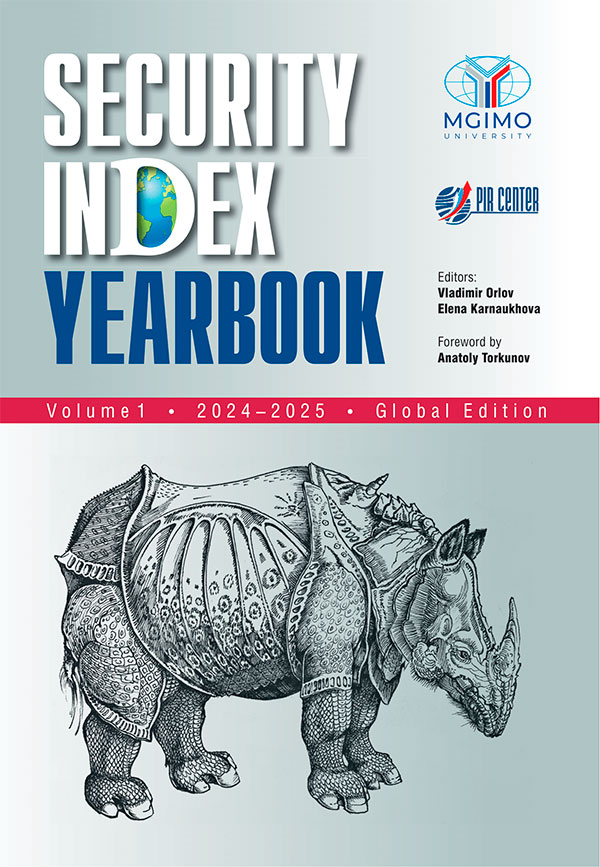... state after Russia to integrate the secessionist territory, although the mode of how Karabakh and Chechnya got incorporated significantly
differ
.
The change in the status quo also contributed to Iran’s notable invigoration. Two Eurasian giants, China and India, have also adopted a higher profile in the Caucasus. With the start of Russia’s military operation in Ukraine in February 2022, the U.S., the EU (and France in particular) along with NATO shifted from “competitive cooperation” with Moscow ...
... India’s with the West’s, which prevents either from becoming disproportionately dependent on their other partners and thus risk a reversion back to Sino-U.S. bi-multipolarity, which only benefits those superpowers. If Russia became dependent on China, India might then become dependent on the U.S. to maintain the balance of power, and vice versa if India became dependent on the U.S. first.
Their special and privileged strategic partnership therefore keeps tri-multipolarity trends alive with the intent ...
... sovereignty.
The fun thing about manufacturing is that it will go where you have the talent and where you were able to arbitrate the cost. There is no other rule for that. Plus, manufacturing will go where you are able to protect IP. Whether it is in India, China, or Vietnam. There are three cornerstones companies look for: is my intellectual property safe? Is manufacturing possible? Can you sell what you manufacture (are the laws of the land compliant so that there is an equal legal footing if someone were ...
... been high since the 1990s, with only certain varieties of rice imported. However, the country started to ramp up rice imports after the pandemic. In 2022, imports reached 6.1 million tons, up from 3 million tons in 2018. The main rice
exporters
to China were India, which accounted for 35% of China’s imports in 2022, Pakistan (19%), Vietnam (13%), Myanmar (13%), and Thailand (12%). However, even with increased rice imports, the country cumulatively brings in no more than 3% of national rice production, and ...
... States will encourage India to strengthen its ties to the leading Arab states of the Gulf, as well as to Israel. Over time India might build stronger ties to NATO through some customized “NATO+” format and to AUKUS, especially if the tensions in India-China relations get stronger. The United States will encourage India to deepen its relations with other U.S. partners and allies in the Indo-Pacific region, including Japan, ROK, Australia and New Zealand. India might also work closer with the key U.S....
... inertia, red tape, lack of imagination, or destructive interference by third parties. The need for a thorough reassessment of the relationship derives from the understanding of general trends in the development of world politics of our times.
Managing India and China
Dipanjan Roy Chaudhury:
India’s Eurasian Pathway: Towards an Evolving Strategic Partnership
The modern world is evolving, albeit slowly and reluctantly, in the direction of a new geopolitical, economic and technological bipolarity. This is clearly ...
... research workshop on technological leadership in the transformation of the world order.
During the workshop, leading experts discussed key issues of global technological leadership in the new environment and considered the development policy of the USA, China, the EU, and India in the field of innovative technologies against the backdrop of growing competition.
Ivan Timofeev, RIAC Director General, and Sergey Afontsev, Deputy Director for Research at the Primakov Institute of International Relations of the Russian Academy ...
... problems with balancing. The imbalance of exports and imports makes it difficult to use rubles and rupees in mutual settlements. Indian business is also very cautious in dealing with Russian counterparties. The Indian market is important for Russia, but India itself, like China, can hardly be considered a “black knight” yet.
The same can be said about Turkey. Trade volumes have showт significant growth. Turkey has become an important hub for the supply of goods to Russia by companies that have left the country, as ...
... implementation either.
So far, until the situation becomes clearer, Chinese businesses have mostly preferred to move much of cargo turnover to Chittagong. There is speculation that the Sheikh Hasina government has decided to take this step to reduce China’s influence and to reassure its Indian partners.
Nevertheless, it is too early to discount the Greater Payra project: Dhaka is exploring the possibility of a port-based economic development zone that would house clothing, footwear and pharmaceutical plants, cement and oil refineries,...
... might ‘first of all… relates to its economic might… why should we follow third countries’ interests in building our policy?’ Such is Russia’s applause for China’s imperialism.” Singh should know, however, that Russia has never taken China’s side in its clashes with India, nor will it likely ever do so.
This is especially the case nowadays, since India serves the purpose of preemptively averting Russia’s potentially disproportionate dependence on China as a valve from Western sanctions pressure. By backstabbing ...



